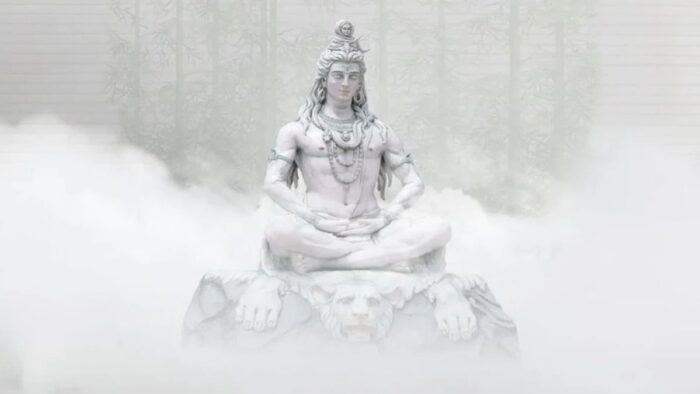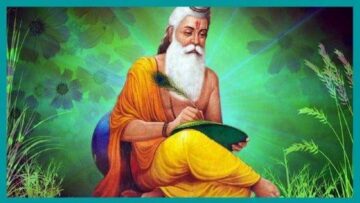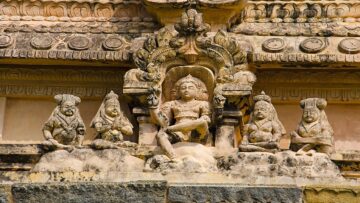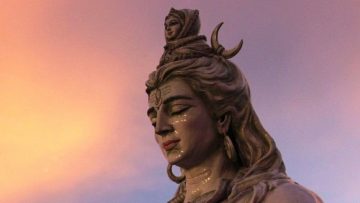The Śaiva religio-philosophical system from ancient times has been spreading the highest and unflinching devotion to Śiva, the supreme God. Various acts of devotion such as the worship of Śiva (mostly in the liṅga), meditation, repetition of the mantra-s (japa), elucidation of the philosophical doctrines and service in the Śiva-temple along with service to the devotees of Śiva are some of the basic and fundamental practices that are universally found common in different schools of Śaivism. These practices can roughly be grouped under caryā, kriyā, yoga and vidyā sections. The Veda-s comprising the doctrinal sections, Upaniṣad-s, the Āgama-s that were revealed by Śiva to the gods and sages and the purāṇa-s all explain these principles in varying proportions. All these scriptures treat these principal points in their own way.
Of these scriptures, the Veda-s have been much explored all these years and various views and conclusions have been propounded. The other class of scripture, the Purāṇa-s are a huge body of literature that has recorded the śaiva religious practices and doctrines with all their details and in turn, has been exerting great influence in moulding the culture and the religious conducts of the followers of Śaivism from very ancient times.
Traditionally the purāṇa-s are considered to be eighteen. Generally, by the word purāṇa, the great ones (mahāpurāṇa) are referred. There are varying lists of purāṇa-s, some overlapping, in almost all the purāṇa-s. In fact purāṇa-s as a class of literature are mentioned in such texts as the Chāndogyopaniṣad. In the same way there are also eighteen upapurāṇa-s. These are again grouped into Śaiva, Vaiṣṇava upapurāṇa-s according to their contents.
In my present paper I focus on the upapurāṇa namely, the Saurapurāṇa (also called Ādityapurāṇa) as well as a section of the Skandapurāṇa, namely, Śaṃkarasaṃhitā. The study is not exhaustive and I intend to highlight some salient features of the text.
Saurapurāṇa
This text is in the form of an interlocution between Manu and Sūrya. It is divided into 69 adhyāya-s. The beginning section treats the all-pervasive nature of Śiva. He pervades the entire universe as its inner self. He is the only inner self and there is none else. That is, nobody else has that supreme power to pervade everything.
The supreme greatness of Śiva
Though unique he exists as everything and He is always accompanied by Umā, His supreme Śakti[1]. He is the only creator and from Him come out Brahmā, Viṣṇu and other gods. In fact these all these gods are mere playing toys (krīḍanaka) for Śiva. Śiva is always accompanied by His supreme Śakti called Umā, Girijā, etc. Interestingly the Saurapurāṇa states that māyā is the power and therefore Śakti and māyā are the same and Śiva is of the form of māyā[2]. The entire universe is created by Him and it exists in Him and during final deluge it abides in Him. There is no other supreme god than Mahādeva. The text very beautifully declares this view using interesting similies: Just as there are no hairs on the body of the tortoise, no horns in the hare’s head, no sky-flower so also there is none greater or superior to Hara[3].
The beginning parts of the Saurapurāṇa are fully interspersed with the views of some of the greatest śaiva upaniṣad-s such as the Śvetāśvatara, Kaivalya, etc. The well-known antaryāmi brāhmaṇa section of the Chāndogyopaniṣad is very eloquently used with many phrases taken from that section[4]. The Atharvaśiras and the Atharvaśikhā Upaniṣad-s have also exerted great influence in the formation of śaiva idea-s and in the declaration of the supreme greatness of Śiva over all other gods. These passages are the hymns addressed by the Veda-s to Śiva.
Efficacy of Śivabhakti
Śiva is realized only through intense devotion (bhakti) accompanied by knowledge (jñāna). The text waxes eloquently on the greatness and efficacy of śivabhakti, its essential role in securing dharma, artha, etc[5]. To try to be happy without intense devotion to Śiva is like trying to get milk from the protuberance in the neck of a goat[6].
Śivadharma
The sun describes clearly the intricacies of śivadharma; it is the greatest of all the means to attain Śiva. It is different from and other than mere following of rites and performing the vedic sacrifices. It is entirely established on bhakti and does not require any external means[7]. The text goes to the extent of saying that even if a sinner committing many offences remembers Śiva with devotion he is saved[8].
The 42nd adhyāya describes the procedure of Śiva worship. The entire rite almost resembles that explained in the śaiva āgamas ad other ritual manuals (paddhati). In the 44th adhyāya deals in detail with various devotional acts and services that one can perform inside the temple of Śiva. We get the corresponding fruit for each of the services.
To give a brief list of various services:
- One may construct a temple for Śiva in clay.
- One may construct temple in the shape called kailāsa or meru or mandara or mahendragiri. He who does in this way reaches the abode of Śiva by the wish fulfilling divine aeroplane (vimāna).
- Even if one restores a dilapidated maṇḍapa or a vimāna or the main sanctum or the temple tower (gopura) he gets unlimited fruits.
- Even if one performs all these or any one of these acts for the sake of his livelihood (vttyartham) he will definitely go to the heavens along with his relatives.
- If one is not able to do all these and only cleans the temple precincts with a soft broom, etc. all his wishes will surely be fulfilled. He gets the fruits equivalent to the performance of the cāndrāyaṇa vrata.
Acts of extreme devotion
- Finally he who resides in the śaiva holy place (śivakṣetra) without moving elsewhere till death by chopping off his legs definitely becomes united with Śiva[9].
- He who dies in a śaiva holy place without food gets united with Śiva (śivasāyujya).
- He who offers his own body as an oblation in the fire kindled before Śiva after worshipping Him attains to the state of Śiva[10].
The 52nd adhyāya of the Saurapurāṇa deals in detail with different sins and the expiatory rites to get rid of them. Sins are generally divided into two kinds, visible (prakaṭa) and secret (rahasya). The divine marriage of Śiva with Goddess Gaurī, the birth of Kumāra are very elaborately described from the 53rd adhyāya to 61st adhyāya.
Greatness of a śivabhakta
The 64th adhyāya again extols the greatness of devotion to Śiva and the devotees of Śiva. Śivabhakti is so great that a person with highest devotion to Śiva is not affected by greatest sins (mahāpātaka). One gets the fruit of the vedic sacrifice, atirātra by just seeing a śivabhakta or by merely speaking with him[11]. The text goes to the extent of saying that one should not look into the class of a śivabhakta—whether he is a Brahmin or a kṣatriya or a śūdra or the lowest one. He should be respected in any situation. One should not question his conduct or birth. The devotee of Śiva who has the holy tripuṇḍra on his forehead should be worshipped. The text declares that Yama is the controller for all creatures except for the śivabhakta-s. That means the devotees of Śiva are only under the protection of Śiva and no other lesser god can exercise their power over them. Saint Tirunāvukkaracar in one of his Tēvāram songs boldly declares that he and the devotees of Śiva are servant of none but Śiva and they dare even Yama, the god of death. Nāvukkaracar proclaims that because of this there is no fear or misery for them and they live in happiness forever. The 65th adhyāya deals with the greatness and the supreme efficacy of the pañcākṣaramantra and the fruits obtained by offering various flowers, fruits, and other substances to Śiva by reciting the pañcākṣaramantra. Many verses are very much similar to the 5th adhyāya of the Śivadharma mentioned earlier. From all these it is very much evident that Śivadharma has exerted greatest influence in the formation of the some important sections of the Saurapurāṇa. These type of texts should be studied and explored more for gaining a true picture of the early development of śaiva religion and philosophy and their influence in the minds of śaiva-s.
The Skandapurāṇa is divided into saṃhitā-s; there is another Skandapurāṇa, probably a larger text, which has seven divisions known as khaṇḍa-s. The former text is widely prevalent and is being studied mostly in the southern part of the Bhāratadeśa and commented (the Sūtasaṃhitā, one of the six books dealing with philosophy, mainly Śivādvaita, has a very scholarly commentary from the pen of one Mādhavamantrī, who, most probably lived in the early part of the Vijayanagara period, the 14th CE); The stories related to Skanda—His birth, His chivalrous battle with Tāraka alias Śūrapadma, etc.—had been adapted into Tamil verse, made into a great epic known as Kaṉtapurāṇam by the 15th century scholarly Śaiva priest, Kacciyappa Civācāriya of Kanchipuram.
Śaṃkarasaṃhitā
The Śaṃkarasaṃhitā is one of the six (seven ?) books of the Skandapurāṇa. It has inner subdivisions such as Dakṣakāṇḍa, Upadeśakāṇḍa, etc. In the Dakṣakāṇḍa there is brief discussion between Brahmā and Dakṣa, one of his ten mind-born sons, on the greatness of Śiva. Dakṣa asks Brahmā Who is the supreme Godhead capable of solely performing the creation, sustenance and drawing back all the worlds unto Himself ? Who is the supreme light (paraṃjyotiḥ) existing as the inner witness in every being ?
कर्ता सर्वस्य जगतः पालको हारकस्तथा ।
सर्वजीवेषु सर्वत्र साक्षित्वेन व्यवस्थितः ।
Brahmā replies him after duly meditating on Śiva. He says, “He who appeared as a huge column of fire before Viṣṇu and Brahma who both were quarelling among themselves overpowered by confusion, is that unique supreme Lord, Parameśvara ; He is the agent of all the worlds, and especially both for me and Viṣṇu. Having created both of us—Brahmā and Viṣṇu—Śiva also allots us the duties to be performed; existing as the inner self of all beings, He activates each one of them to perform its own work.
This statement of Brahma is the corroboration of the Chāndogyopaniṣad passages in the III.vii.5-23:
योऽग्नौ तिष्ठन्नग्नेरन्तरो यमग्निर्न वेद यस्याग्निः शरीरं
योऽग्निमन्तरो यमयति एष त आत्मान्तर्याम्यमृतः ॥ ५॥
योऽन्तरिक्षे तिष्ठन्नन्तरिक्षादन्तरो यमन्तरिक्षं न वेद
यस्यान्तरिक्षꣳ शरीरं योऽन्तरिक्षमन्तरो यमयत्येष त आत्माऽन्तर्याम्यमृतः ॥ ६॥
यो वायौ तिष्ठन्वायोरन्तरो यं वायुर्न वेद यस्य वायुः शरीरं यो
वायुमन्तरो यमयत्येष त आत्माऽन्तर्याम्यमृतः ॥ ७॥
To inculcate the view that Śiva exists as the innermost self of everything Brahma continues and gives the example of fragrance pervading the entire flower, the oil existing as the inner most essence of sesame and the sound pervading the gong (ghaṇṭā):
पुष्पेषु गन्धवज्ज्ञेयस्तिलेष्वपि तैलवत्।
घण्टायां ध्वनिवद्वग्नौ प्रभावत् परमेश्वरः।
This statement is direct corroboration of the view expressed in the example verse 8 on the 2nd sūtra of the Civañāṉapōtam of Meykaṇṭār which is one of the basic texts of the Śaivasiddhānta system in Tamilnadu. The verse in Tamil reads as:
பண்ணையும் ஓசையும் போலப் பழமதுவும்
எண்ணும் சுவையும் போல் எங்குமாம் அண்ணல் தாள்
அத்துவிதம் ஆதல் அருமறைகள் ஒன்று என்னாது
அத்துவிதம் என்று அறையும் ஆங்கு.
As Śiva exists in an inseparable relation with the selves just as the musical note and the music, the fruit and its sweetness, the Veda-s do not say Śiva is one but they state that Śiva is non-dual.
In fact the entire text of the Skandapurāṇa in all its different books (saṃhitā-s) is fully permeated with Śaivasiddhānta and Śivādvaita viewpoints.
Like this there are many more such great Śaiva philosophical views found scattered in some of the Upapurāṇa-s which require a deep study and exploration.
Footnotes:
[1] स एवात्मा समस्तानां भूतानां मनुजाधिप. एकोऽपि बहुधा भाति लीलया केवलः शिवः . ( Saurapurāṇa, 2: 2b, 3b)
[2] अभेदः शिवयोः सिद्धो वह्निदाहकयोरिव .
माया सा परमा शक्तिरक्षरा गिरिजाव्यया .
मायाविश्वात्मको रुद्रस्तज्ज्ञात्वा ह्यमृती भवेत् . (ibid. 2: 17b-18b)
[3] न यथा कूर्मरोमाणि शृङ्गं न शशमस्तके .
न यथाऽस्ति वियत्पुष्पं तथा नास्ति हरात् परम् . (ibid. 2: 35)
[4] Vv. 2: 43-50.
[5] धर्मार्थकाममोक्षाणां प्रायणे कारणं परम् .
शिवभक्तिः सदा सत्यं नान्यत् किञ्चन भूतले .
शिवभक्त्या धनं विद्या यशः शत्रुक्षयस्तथा .
प्राप्यते विजयः सर्वं सत्यमेतन्न संशयः . (Passages given at the foot-note on p. 5 as forming part of the Saurapurāṇa found in on emanuscript)
The Śivadharma also has a few very interesting passages defining bhakti towards Śiva:
मद्भक्तजनवात्सल्यं पूजायां चानुमोदनम् .
स्वयमभ्यर्चनं चैव ममार्थे चाङ्गचेष्टनम् .
मत्कथाश्रवणे भक्तिः स्वरनेत्राङ्गविक्रियाः .
ममानुस्मरणं नित्यं यश्च मामेवोपजीवति . (1: 27-29) These and the succeeding passages of the Śivadharma are exactly found in the Saurapurāṇa also in the 11th adhyāya vv . 16b-19
From these one can easily understand that intense bhakti was given utmost importance in śaiva relion also and such a bhakti is not the only property of vaiṣṇavism alone.
[6] शिवभक्तिमृते यस्तु सुखमाप्तुमिहेच्छति .
अजागलस्तनादेव स दुग्धं पातुमिच्छति .
[7] धर्मो बहुविधः प्रोक्तो मुनिभिस्तत्त्वदर्शिभिः .
तत्राक्षयः परो धर्मः शिवधर्मः सनातनः . ( 3: 7b-8a)
यः पुनः शिवधर्मस्तु न साधनमपेक्षते .
[8] In the Tēvāram songs of Appar we come across the same view: even if one lives a wretched life subsisting on cow’s meat but fully devoted to Śiva, then, he himself is a god that one reveres.
சங்கநிதி பதுமநிதி இரண்டும் தந்து
தரணியொடு வான் ஆளத் தருவரேனும்
மங்குவார் அவர் செல்வம் மதிப்போம் அல்லோம்
மாதேவர்க்கு ஏகாந்தர் அல்லார் ஆகில்
அங்கமெலாம் குறைந்து அழுகு தொழுநோயராய்
ஆ உரித்துத் தின்று உழலும் புலையரேனும்
கங்கைவார் சடைக்கரந்தார்க்கு அன்பராகில்
அவர் கண்டீர் நாம் வணங்கும் கடவுளாரே. (Tēvāram, 6: 95: 10)
[9] अथाऽऽत्मचरणौ छित्त्वा शिवक्षेत्रे वसेन्नरः .
देहान्ते शिवसायुज्यं लभते नात्र संशयः . (44: 15b-16a)
[10] शिवस्य पुरतो वह्निं संस्थाप्याभ्यर्च्य शङ्करम् .
जुहुयादात्मनो देहं यः स याति शिवं पदम् . (44: 13b-14a)
[11] दर्शनाच्छिवभक्तानां सकृत् सम्भाषणादपि .
अतिरात्रस्य यज्ञस्य फलं भवति नारद . (64: 40b-41a)
Disclaimer: The opinions expressed in this article belong to the author. Indic Today is neither responsible nor liable for the accuracy, completeness, suitability, or validity of any information in the article.










